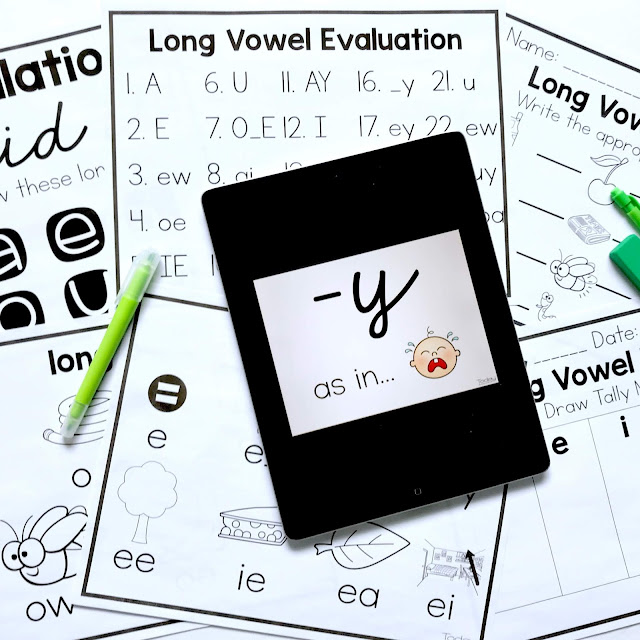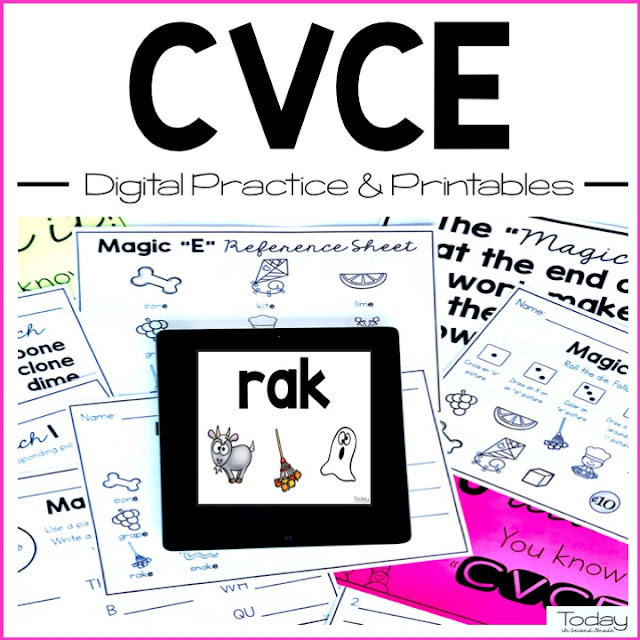Hi Friends,
I'm so excited to tell you all about my phonics routine!
This blogpost and these packs have been in the works for a very long time and I'm so happy to finally be able to share it all with you.
At the beginning of the year, I spend some time reviewing phonics and sight words with the majority of the class. In September, MANY students in my class often need this extra practice/review, however it is important to note that not ALL students NEED it. It usually doesn't take me too long to identify the students in question. It is equally important that my advanced readers (who are beyond phonics and sight word instruction) get what THEY need too. This (usually) small group gets to work on other tasks during review (mainly chapter book work - which they LOOOOOVE).
As the year progresses, my phonics group gets smaller and my chapter book groups get bigger, until we reach a point where there is no need to do daily phonics/sight word review anymore. Of course, there are sometimes one or two students who may still need this extra instruction. They get to continue to review with me during guided reading, with a volunteer, or during resource support.
Let's get to it!
Let's get to it!
I usually start off the year with short vowels and consonant letters. We are usually able to go through these quickly and don't spend too many days on this as these are the sounds they focused so much time on in first grade.
I always go through the slides on my own first. This way I know what each picture is and what sound the students need to be looking for. This helps ensure that the lesson runs smoothly. At the beginning of each day we review together for about 20 minutes on the interactive whiteboard.
After some time, I do allow students to practice and play the games on a tablet (especially those who need extra practice).
First, we go over the reference slides that have the sounds with associated pictures.
Next, we run through the "sound slides." I have created a number of slides with the sounds in different fonts. This way students can familiarize themselves with the letters and sounds in different formats so that they can have an easier time reading them in different texts that may offer a variety of fonts.
Then comes the picture/sound game. Students look at the picture on the slide, say the name of the object, and then say the appropriate sound.
Once they share the sound, I click on the slide and the letter sound appears to let the student know whether or not he/she is correct.
Finally, we get to play a phonics game, which is always a great hit!
Sometimes the game is about clicking on the picture that matches the sound on the slide, other times (like in the example below) it's about clicking on the picture that doesn't belong. The games are clickable and include "You got it!" and "Try Again" slides to help students play.
We usually go through these games a few times until students start to feel comfortable with the sounds. As we progress, I start to go through games more quickly. We will go through only a few slides to review and practice and then move on to the next set. After a while, I eliminate certain sets altogether. We don't need to keep reviewing consonant sounds for several months! As we master certain sounds, we start to introduce new packs like digraphs, blends, etc...
For those students who still need practice, I also offer the reference sheets and printables for home!
I also have some evaluation sheets that I use to ensure that they have mastered the sounds and to place in their data folder. It's so important to document progress with students. Learning to read can be a very long and frustrating process for some students. When we show them that they are moving forward even with small steps like mastering consonant letter sounds, they feel proud and ready to take on the next step!
As mentioned above, once we begin to master certain sounds we move on to more challenging ones. We use the games in the same manner. Everyday is different and I don't like to set the routine in stone. I like to keep things fluid and flexible and make sure that I don't overwhelm students. We also throw in a few brain breaks to make sure we have optimum learning going on.
EVERYDAY PHONICS RECAP
1. Teacher reviews the unit before using it with the class.
2. Review reference slides, as a class, on the interactive whiteboard.
3. Practice "different font" slides, as a class, on the interactive whiteboard.
4. Practice "picture/sound" slides, as a class, on the interactive whiteboard. This can be done as a whole class or you can give each student a turn.
5. Play game, as a class, on the interactive whiteboard. This can be done as a whole class or you can give each student a turn.
* Don't forget that your advanced readers should be doing something else while you do this 20 minute review each day. ALL students need to be challenged appropriately.
** Don't forget to add some brain breaks to ensure students don't get too "antsy."
*** As students master certain sounds throughout the weeks, don't be afraid to just review a few slides from the "mastered" packs or even give them up completely if students are really comfortable with the sounds. Add new sound packs as students progress, until you reach the ALL PHONICS pack (a pack that includes ALL sounds mixed together).
**** Feel free to give students extra practice with printables, and monitor progress with the evaluation sheets and certificates for data folders.
Here are the other packs that I use as we move forward with our phonics mastery!
Once we've gone through all the sounds, we work on the ALL PHONICS pack where ALL the sounds are mixed together. It's such a great feeling when we get to this pack because it means we know our sounds and we are on our way to becoming GREAT READERS!
Once we are masters we learn 3 letter sounds with trigraphs!
I also have a CVCE pack AND am working on word endings!
You can check out my bundle HERE!
You can also click HERE to try out one of my FULL PHONICS packs!































No comments